Wharfedale DENTON 85 Review
Wharfedale’s latest 85th Anniversary Denton recalls power from the past says Noel Keywood.
It might look a bit antiquated – but it isn’t. Within Wharfedale’s traditional cabinet lie modern drivers and crossover, giving their new Denton 85th Anniversary loud-speaker an impressively modern performance. All within a compact but not-small cabinet subtly tuned for good bass and high output.

By combining old values with new ones like this, the Denton may seem like a peculiar hybrid to some of us in the UK, but it is likely aimed as much at the Chinese market where traditional British hi-fi is better recognised and valued than in its home market. Wharfedale’s old Denton 80th Press Release brochure was sparse in appearance, the new one a lavish historical document complete with picture of propeller driven aircraft in background showing latest delivery method, back in the 1950s.
And as always we have the ladies making the parts, as they still do today in China, even if modern Chinese production lines are somewhat larger and more daunting than Marconi’s pictured in this brochure. I wonder whether the Chinese relate to the shot better than us in the UK, with period Western dresses, hairstyles and what have you.
Wharfedale is now part of Chinese International Audio Group (IAG) so they understand the Zeitgeist here better than I, which is why I suspect the latest Denton 85th Anniversary will be enjoyed more by others than Brits.
All may not be what it seems then! And I can say that of the new Denton in physical form. The bass unit has a modern synthetic Kevlar cone – now quoted as 165mm, up from 125mm of the 80th Edition.
The tweeter remains a nominally 1 in (25mm) textile dome with Ferrite magnet, now with a protective front grille. Increasing both cabinet volume and bass unit size improves both bass output and sensitivity – our measurements confirming this. The new Denton needs little power to go very loud, making amplifiers of 40 Watts plenty enough for most rooms; they can even be driven by a valve amplifier (4 Ohm tap). So inside the Denton is bang up to date.
Trad. appearance means it comes in a sturdy, squat cabinet measuring 340mm high, 240mm wide and 275mm deep, plus 12mm more for terminals. But it is solid and heavy at 9kgs, purposed for a strong shelf or stands; the Denton is certainly no mini. But at the same time cabinet volume is how you get decent bass, so size here isn’t cosmetic but has purpose. ‘Speakers of old might not have been tall and slim – they had bass instead!
A real wood veneer is used and the front panel is even surrounded by baffle trim – rarely seen nowadays. With grill on or off you get to see a Wharfedale badge. Both cabinet and bass unit size have increased over the 80th edition, and the tweeter is now offset to produce a ‘handed pair’ – giving left and right loudspeakers, tweeter on inside for best imaging.
At rear there are lovely heavy duty gold plated terminals, with removable links to allow bi-wiring. They accept bare wire, 4mm banana plugs or spades; easy to access and use.
SOUND QUALITY
The Denton 85s, as I’ll call them, were distinctive in good ways, bad ways and good-and-bad ways – meaning I got a bit confused in the end! I’ll explain later.
Initially I paired them with a safe combo of Creek Evolution 100A amplifier, driven via Chord Company Epic balanced cables to the power amp section from an Audiiolab 8300 CDQ player acting as preamp and CD player. An Astell&Kern AK-120 player delivered hi-res, connected to the 8300 CDQ digitally via a short QED Quartz glass optical cable. Loudspeaker cables were Chord Company Signatures.
“I haven’t heard this sort of delivery for a long time and feel they brought an engaging sense of scale”
Starting with high dynamic range (uncompressed) CDs, saxophone behind Hans Thessink singing Mississippi had a nice warm and fulsome presence, trundling along casually behind his vocals that stood out well. There was good dynamic separation between them and reverb around Hans Thessink’s vocals was made obvious, giving a nice feeling of atmosphere and being-there. Guitar strings were crystalline in quality, forward in the mix and finger picking highlighted, making for a close-up feeling.
The bass line in John Campbell’s Down in the Hole (CD) strode along firmly and had plenty of presence, showing an Olde-Worlde ability here: think fulsome and powerful. The Denton’s sound large – larger than they appear.
Distinctive in a good way.
Fleetwood Mac’s Dreams (24/96) was dealt with less sympathetically. Steve Nicks vocals were sharp sounding and cymbal crashes from Mick Fleetwood’s drum kit harsh. This track is a digital transcription from analogue master tape that I use regularly and know is a bit hard and bright up top. The Denton 85s emphasised its problems, making for a not especially pleasant rendition; “unforgiving” my notes say. Distinctive in a bad way here.
Rimsky Korsakov’s Snow Maiden from the Chicago Symphony Orchestra (24/96) came over as a lively performance with horns, violins well separated, and with entertainingly strong kettle drum strikes. Here the Denton 85s were deliciously resonant, enhanced by the cabinet in old-stye fashion. Distinctive in a good way again here; I haven’t heard this sort of delivery for a long time and feel they brought an engaging sense of scale to orchestra, belying their small size.
Because the Denton 85s were quite obviously bright in their delivery with our easy-going Creek Evolution I00A I turned to our Icon Audio Stereo 30SE single-ended (30 Watt) valve amplifier. It made no difference: subjectively the balance was the same.
Moving on to vinyl I hooked up our Timestep Evo Technics SL-1200 Mk2 turntable with SME309 arm and Audio Technica VM750SH moving magnet (MM) cartridge, working through an Icon Audio PS3 Mk2 valve phono stage. Spinning Hugh Masekela’s Uptownship (I80gm, from Analogue Production) the Dentons sounded vividly clean and forthright, giving fantastic insight into the music. Now their strong treble served to highlight the ringing percussion. There was also resonant heft to the drums, making them lively and exciting.
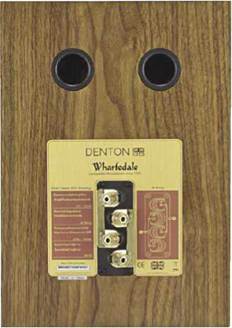
Lovely rear panel, veneered and with quality gold plated bi-wire terminals. The +ve link can be replaced with a resistor to lower treble, a tweak we applied.
The fabulously recorded (2018) Big Band Spectacular LP from Chasing the Dragon, a live performance by the Syd Lawrence Orchestra direct to 30ips master tape, had Sing Sing Sing chiming out into our large 6500cu ft listening room at full scale – from a 30 Watt amplifier. The fast drumming was delivered with pace and power – I sat back and enjoyed a large band in front of me, brass blaring and cymbals ringing.
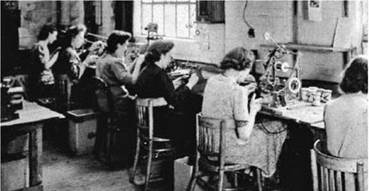
Wharfedale parts being made on a Marconi production line.
With this LP and others of high quality the Dentons were exciting. Their old-skool nature shone through to punch out a strong sound – the revealing tweeter acceptable as long as it was fed a good source. A cartridge with sophisticated stylus profile – Shibata in this case – was just such a source, but dodgy-digital was not.
Emphasised treble has made the new 85th Anniversary Edition more critical and less forgiving than the 80th Anniversary Edition. With Dire Straits Brothers In Arms LP (Mobile Fidelity, 180gm, 45rpm) repetitive cymbal strikes marking out the beat had very obvious presence, more so than I am used to from our reference Martin Logan X-Stat electrostatic panels. Alison Goldfrap’s Ride a White Horse (12in 45rpm single) pounded out strongly, the synth bass beat having a resonant strength characteristic of an old-style loudspeaker – and all the better for it I felt. Unfortunately, emphasis of sharp vocal sibilants wasn’t so good.
Slightly frustrated by the mix of good and bad I got tweaking. A 2 Ohm resistor to the treble unit, replacing the bi-wire positive (+) link, gave a measured flat response but a warm-ish sound, whilst a I Ohm resistor was perfect – clear treble but not overwhelming. This gave me the Denton 85th I wanted to hear and is a very simple thing to do (such a tweak can be made to any bi- wirable loudspeaker). Hi-hats didn’t overwhelm, cymbals didn’t crash harshly and rim shots were clear but not destructive; ride cymbals fell back to accompany rather than dominate.
CONCLUSION
The new Denton 85th Anniversary has bass powerful in a lively resonant sense that makes modern small loudspeakers sound restrained.

Wharfedale loudspeaker delivery by latest method (in the 1950s). See propeller in background.
Getting big kettle drum strikes and cross panned drum kit rolls to sound realistic isn’t something small loudspeakers manage well, but the Denton 85s had no problem. As standard there was too much treble for me, but with a 1 Ohm resistor tweak it all fell into place: clear, full bodied, punchy and exciting beyond what you’d expect at either the price or the size.
MEASURED PERFORMANCE
Frequency response, measured using third-octave analysis of pink noise, shows basically level output from 60Hz to 20kHz within +/-3dB limits the tweeter now giving more output than 80th Anniversary Edition, with a +2dB lift from 5kHz upward. There is no dip at crossover between the drive units, making detail more apparent. As before phase matching between drivers was good and dispersion wide so they differ little on and off axis. Our response is 20 degrees off-axis, tweeter on inside.
Bass output from the ‘speaker has been smoothed and extended downward slightly, port tuning moving from 52Hz down to 40Hz. There is now a small peak in port output at 30Hz too. With bass level now lower the new Denton will not sound warm or bass heavy and less ‘fulsome’ close to a rear wall.
Sensitivity for a small loudspeaker was very high at 88dB, +2dB up on the earlier model, but this is achieved by using a 3.6 Ohm d.c.r. bass unit.
Measured impedance is now an industry-standard 6 Ohms however; the old Denton 80th measured 8 Ohms. Such high sensitivity means amplifier of 40 Watts will go very loud; high power is not needed.
The new Denton 85th Anniversary Edition will sound lighter and brighter than the 80th, due to raised tweeter output. It has smoother bass that runs deeper and will sound controlled when close to a wall. Sensitivity is very high too. Very good, but with overly strong treble.
FREQUENCY RESPONSE Green – driver output Red – port output
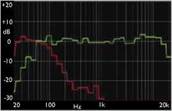
IMPEDANCE

VERDICT
When you purchase through links on our site, I may earn an affiliate commission. Here’s how it works.




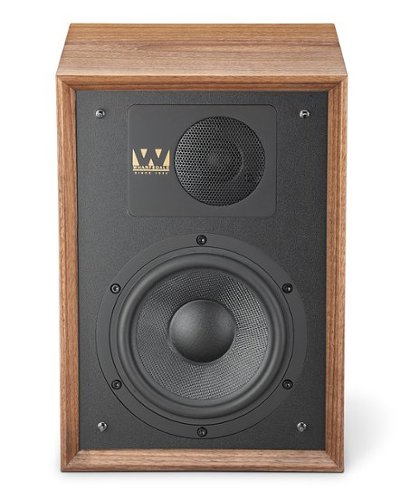



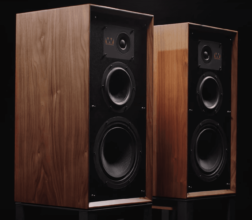
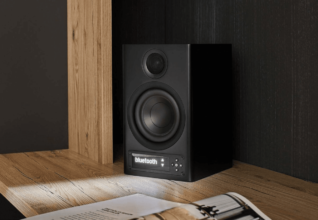


I don’t know much about electronics. I looked up a 1 Ohm resistor to buy and tame the treble as you had, but I found that they come in different wattage. What wattage resistor should I get and can you provide a link on where to buy them. Thanks.
A 5W resistor will do, you might consider a 3 ohm resistor for smoother treble
Nice review. Still,did not get the tweak thing with the 1ohm resistor… any link suggestion,where DIY would be explained ? Thanks. P.
If possible, I would, like Pierre, want to know if there is any step by step guide (or something) to the 1 ohm-resistor-tweak? Best regards.
They are only bright when you connect them according to Wharfedale’s recommendations, which is diagonal wiring. However, when you connect them using only the HF connectors (bridged to LF), the sharpness in the treble is gone. Do this and you’ll have very good speakers.
Hi. You mentioned to connect them using only the HF connectors (bridged to LF).
So do I connect my speaker cable red to red and black to red? And remove on end of the LF jumper cable and connect it to the red instead?
Did you remove the grilles to listen and measure? If so then you will hear a reflection from the cabinet edges which causes the treble sharpness you mention.
The Dentons and Lintons were designed to be used with grilles fitted which provide a natural tonal balance.
Please confirm if the review if this review was with grilles or without grilles and provide reviewer name.
Very little review about the mids and vocals. I place the strongest emphasis on the mids since I listen to music and watch movies on my 2.1 system. This review doesn’t help me in the least. All the reviewer did was talk about how strong the bass was and how the treble was overly sharp but detailed. If the mids aren’t this speaker’s strengths there’s no way I will consider it.